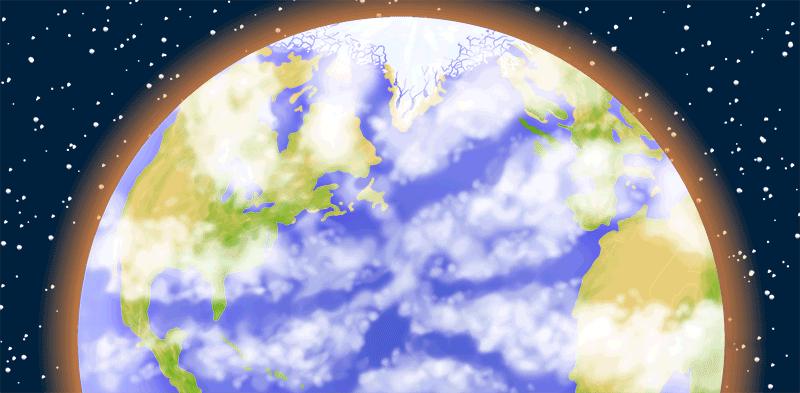NASA website offers comprehensive coverage of climate change
The people who mastered rocket science have turned their considerable analytic skills to a pressing problem much closer to home. It turns out that NASA does not spend all of its time studying space. In fact, the organization does a lot of research on Earth, including the causes of, impacts of and solutions for climate change. You can see the results of this work at climate.nasa.gov.
The site, which is titled Global Climate Change, Vital Signs of the Planet, is slick and full of interesting information and amazing imagery. Climate change has been making news for decades, but it is even more urgent now. Megadroughts, huge wildfires, more frequent and powerful storms, and deadly flooding have all made headlines this summer. The United Nations Intergovernmental Panel on Climate Change recently released a sobering report on the climate. The overwhelming scientific consensus is that human-influenced climate change is happening, some of its impacts are irreversible, and we need to act now to prevent it from becoming catastrophic.
NASA has gathered data from the land, sea, air and space for a long time. Stunning images, videos and graphics are used on the site to display the results of this research. There are also many in-depth articles examining different aspects of the problem.
The home page features a carousel of featured articles at the top. The links consist of beautiful full-screen images, a headline and a synopsis of the story. Currently, the featured articles cover rising seas, melting glaciers, Earth’s magnetic field and tropical forest health. Just below the carousel is a row of statistics on greenhouse gas levels, temperatures, ice cover and sea levels.
As you scroll down the page, there are more features. A News and Features gallery has articles on how NASA data is used to respond to wildfires, track heatwaves, conserve wildlife and more. Below that is a section with answers to common questions about climate change. It’s organized into four subsections: Evidence, Causes, Effects and Solutions. Below that are links to the site’s blog and social media content.
Next is some interactive content. Images of Change lets you explore a collection of before and after images of the Earth taken from space. You can see the effects of drought, flooding, wildfires, deforestation and other climate-related events over time. Climate Time Machine lets you watch time-lapsed animations of how carbon dioxide, temperatures, sea levels and ice cover have changed over time. There’s also a collection of apps that can be downloaded to further explore the climate. Beautiful Earth is a gallery of photos taken by satellites that are more art than science.
There’s a link to a companion site, NASA Climate Kids, that is designed for elementary school-aged children. It covers a lot of the same topics but in a more kid-friendly manner. On the flip side of that is a lot of information that may be too in-depth for the casual visitor but is of value to the media, educators and policy makers in government and business. This is a nicely designed site full of good information on a topic that couldn’t be more important.

Kevin OʼNeill has been a staff artist for The Times-Tribune since June 1993. In addition to doing illustrations and infographics and designing pages for the paper’s print and electronic publications, he writes InSites, a weekly column about websites and apps. Contact: koneill@timesshamrock.com; 570-348-9100 x5212



